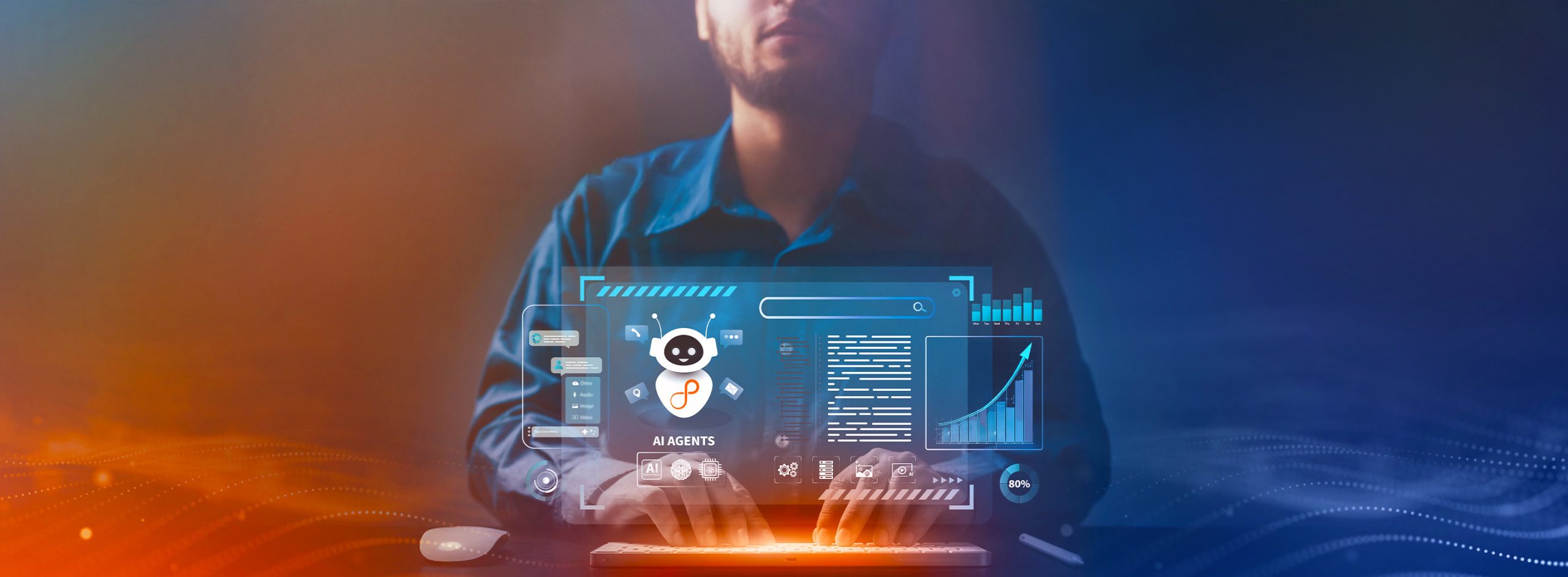What is Generative AI ?
Generative AI (GenAI) is a type of Artificial Intelligence (AI) technology that can create a wide variety of content such as text, images, videos, audio, and 3D models. It does this by using large language models (LLMs) to train on very large amounts of data, and then uses this knowledge to generate new and unique outputs. As the name suggests, GenAI primarily differs from previous forms of AI or analytics because it can generate new content, often in “unstructured” forms.
A lot of buzz was created by the recent launch of ChatGPT, a text-generating AI tool that can perform several functions, such as answering questions, editing, summarizing, and drafting new content. While ChatGPT has received a lot of attention, the GenAI capabilities are not just limited to text but cover a broad range of content, including images, video, audio, and computer code. Apart from ChatGPT, other popular GenAI tools are Bard for text generation, MidJourney and DALL-E for image generation, DeepBrain and Synthesia for video and speech generation, and CodeWhisperer and Co-pilot for code generation.
Healthcare Specific Large Language Models
Generative AI opens-up the possibility of a lot of new use cases for various businesses to automate, augment and enhance manual processes and thus help improve customer experience and employee productivity. Several companies are also developing healthcare and medical domain-specific models, such as Med-PaLM from Google, BioGPT, ClinicalBERT and GatorTron from the University of Florida and Nvidia. These models are trained in the healthcare domain to provide accurate answers to medical questions.
Is this a tech hype, or a game-changing opportunity? Let us look at some possible use cases for using these tools in the healthcare industry.
Opportunities
Healthcare, Pharma, and Medical Devices companies are evaluating the new technology and exploring business use cases to apply this technology as there is a huge potential for Generative AI to help improve patient care and experience, clinical decision-making, reduce healthcare professional workload, speed up medical research and enhance operational efficiency. One of the immediate near-term opportunities lies in the potential to automate documentation and reporting work done by physicians and nurses in both clinical and research scenarios. Some notable early use cases are:
- Medical Notetaking: Generative AI can streamline and automate the medical notetaking process by capturing the key facts from patient conversations and summarizing them as physicians’ notes in Electronic Health Record. It can also be used to summarize and create clinical notes such as visit summaries, discharge notes, radiology reports, or pathology reports. The technology can also simplify complex medical language into summaries and translate them into any language so patients can understand easily.
- Clinical Decision Support: Generative AI can assist doctors and medical professionals make accurate and informed diagnoses and suggest treatment options by analyzing data from a patient’s medical records, lab results, previous treatments, and medical imaging, such as MRIs and X-rays. It can also help in patient education by addressing queries related to disease and treatment.
- Telemedicine and Remote Patient Monitoring: ChatGPT-based virtual assistants can help patients schedule appointments, receive treatment, and manage their health information. It can also be used to monitor patients remotely by analyzing data from wearables, sensors, and other monitoring devices, providing real-time insights into a patient’s health status to healthcare providers.
- Medical Information and Education: Patients can communicate with ChatGPT using natural language and ask questions related to drugs, including dosage, side effects, and interactions. ChatGPT can also provide students and healthcare professionals with instant access to latest research, guidelines and practices, thus supporting their ongoing learning and development.
- Drug Discovery: The use of GenAI can accelerate the drug discovery and development process. By searching through medical and scientific literature on websites, such as PubMed or clinicaltrials.gov, potential drug candidates can be identified and tested for effectiveness using computer simulations (in silico) before proceeding to the clinical trials on animals and humans.
- Drug Development: GenAI can design clinical trials and author protocol documents. It can also create Clinical study reports by generating summaries of clinical trials, including the study design, patient characteristics, efficacy and safety results, and statistical analyses. This can significantly reduce the time and effort required to compile this information manually.
- Medical devices Submissions: GenAI can be used to automatically create necessary Premarket Approval (PMA) application or a Premarket Notification 510(k) documentation for FDA Submission of . It can also be potentially used for creating labeling documentation.
- Medical Device Predictive Maintenance: By analyzing data from medical devices, such as imaging equipment or ventilators, GenAI algorithms can predict when maintenance is necessary. This can help healthcare providers activate their supply chain processes earlier to proactively maintain their equipment and reduce the risk of equipment failure.
- Synthetic Medical Data: GenAI can help generate synthetic patient-level medical data that is realistic to train machine learning models without the risk of exposing private information about actual patients.
Barriers and Challenges
While the technology holds a lot of promise, it’s important to note that it is still evolving and comes with its own set of technical challenges and regulatory issues. Current limitations include the amount of computer power required for LLMs to function, which is often costly. LLMs also require huge volumes of data to be trained effectively as the output accuracy of GenAI is highly dependent on the quality of the datasets used to train them, including medical records, lab results and imaging studies.
Any error in the AI-generated diagnosis and treatment plan could potentially put the patient’s health at risk. Having a regulatory framework is vital to ensure responsible and ethical use of GenAI in healthcare while safeguarding patient safety. Developing these frameworks will take time and require collaboration between industry, regulators, and other stakeholders.
Current Trends & Outlook
While most companies are still exploring and evaluating the technology, some companies have gone beyond exploration and started using ChatGPT in real-world scenarios. Microsoft has launched Dragon Ambient eXperience (DAX) Express, an artificial intelligence-powered clinical notes app for healthcare professionals. EPIC is integrating its EHR with GPT-4 to help healthcare workers draft message responses to patients’ queries and analyze medical records for trends.
This trend of healthcare companies leveraging the capabilities of large language models (LLMs) is likely to continue and grow exponentially, particularly in areas that don’t have a direct impact on patient health, such as note taking and document creation. Other areas like clinical decision support, including diagnosis and creating treatment plans, will require companies to obtain FDA approval of GenAI as a medical device for commercial adoption.






